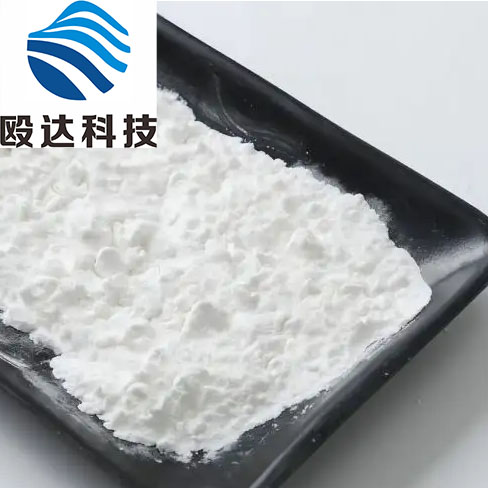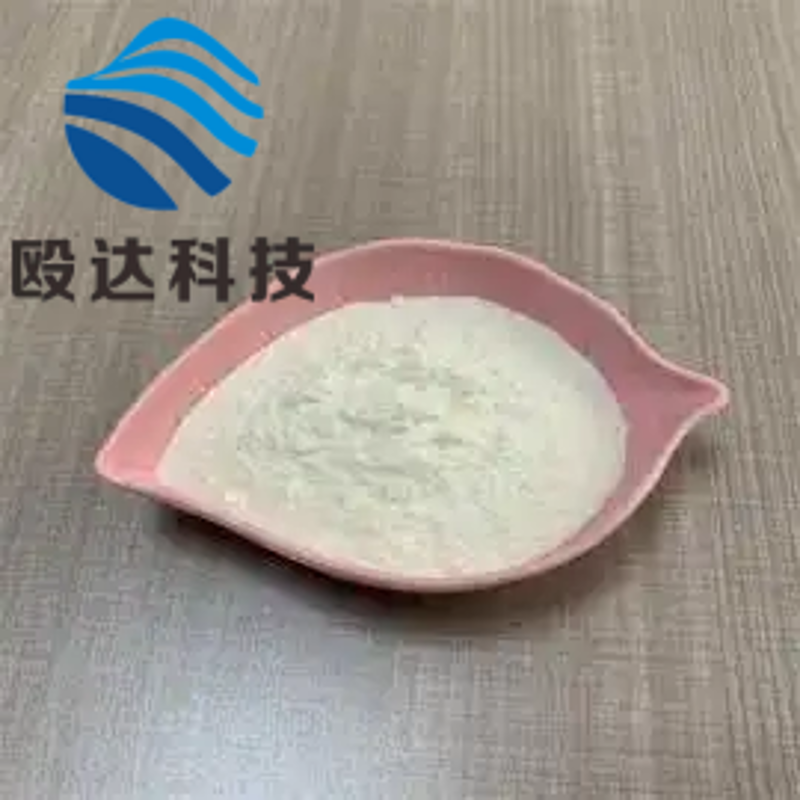-
Categories
-
Pharmaceutical Intermediates
-
Active Pharmaceutical Ingredients
-
Food Additives
- Industrial Coatings
- Agrochemicals
- Dyes and Pigments
- Surfactant
- Flavors and Fragrances
- Chemical Reagents
- Catalyst and Auxiliary
- Natural Products
- Inorganic Chemistry
-
Organic Chemistry
-
Biochemical Engineering
- Analytical Chemistry
- Cosmetic Ingredient
-
Pharmaceutical Intermediates
Promotion
ECHEMI Mall
Wholesale
Weekly Price
Exhibition
News
-
Trade Service
*It is only for medical professionals to read for reference.
How to prescribe a targeted diagnostic test, one article will master.
Abnormal thyroid function is the main clinical manifestation of many thyroid diseases.
When faced with different patients and different detection methods, how should doctors prescribe diagnostic tests in a targeted manner? When should I check Thyroid Stimulating Hormone (TSH)? Screen patients with suspected thyroid dysfunction based on symptoms or risk factors; when goiter or thyroid nodules are found; monitor the adequacy of treatment in patients receiving thyroxine replacement therapy, and monitor at least 4 to 6 weeks after dose adjustment.
If the dose is not adjusted, it will be once a year; start or stop hormonal contraception, hormone replacement therapy, and patients receiving levothyroxine treatment in the first trimester.
(TSH level>4mIU/L is the accepted threshold for starting levothyroxine therapy in the first trimester; whether TSH is between 2.
6~4mIU/L whether to start levothyroxine therapy is controversial.
) Once abnormal TSH levels are detected, it must be carried out based on thyroid hormone levels Interpretation.
TSH is a hormone secreted by the anterior pituitary gland to promote the synthesis and release of thyroid hormone.
90% of the hormone secreted by the thyroid is T4, and the rest is triiodothyronine (T3).
T4 is converted into biologically active T3 by deiodinase.
This physiological basis is very important in the diagnosis and treatment of thyroid diseases (Figure 1).
Figure 1.
Examination process for abnormal TSH in non-pregnant adults.
How to check if the TSH level is elevated? If TSH is high, further check the free T4 (FT4) level: TSH is elevated, FT4 is below the reference range, and the diagnosis is primary hypothyroidism.
TSH is elevated, FT4 is within the reference range, and the diagnosis is mild or subclinical hypothyroidism.
Slightly elevated TSH can usually be recovered without treatment; thyroid function should be retested after 1 to 3 months.
If the abnormality persists, further examination or treatment is required.
For hypothyroidism without palpable nodules, thyroid ultrasonography and thyroid scintigraphy should not be performed.
It is recommended to check TSH and FT4 levels and thyroid peroxidase antibody (TPOAb) when starting levothyroxine treatment, and recheck thyroid function every 4 weeks until stable.
TPOAb and thyroglobulin antibody (TGAb) are present in 18% of normal thyroid patients, and no treatment or reexamination is required.
Patients with antibody-positive and subclinical hypothyroidism progress to dominant primary hypothyroidism at a rate of about 5% per year, much higher than those with normal TSH.
How to check if the TSH level is lowered? If TSH is low, check FT4 and FT3: FT4 and/or FT4 are higher than the reference range, the diagnosis is primary hyperthyroidism.
Free thyroid hormones are normal, and a slight decrease in TSH (0.
1-0.
5mIU/L) indicates mild or subclinical hyperthyroidism, non-thyroid disease or drug interference.
TSH receptor antibody (TRAb) positive supports the diagnosis of Graves disease.
Elevated TRAb levels are specific to Graves disease.
If TSH continues to be low (<0.
1mIU/L), TRAb should be measured.
If the TRAb test is negative or there is diagnostic uncertainty, thyroid scintigraphy should be performed to distinguish Graves disease, toxic nodules, and thyroiditis.
If the TRAb result is negative or there is uncertainty, Tc-99m pertechnetate scintigraphy can be used to determine the cause of hyperthyroidism in non-pregnant people.
The tracer in the thyroid cells simulates the iodine uptake in the glands.
The uptake level reflects the activity of the thyroid, including the uptake pattern and uptake quantitative, compared with the salivary gland uptake or reported as a percentage (Figure 2).
Figure 2.
The front global view of Tc-99m pertechnetate thyroid scintigraphy.
Salivary glands are visible in the upper neck of each image, but due to the relative intensity of thyroid uptake, they are faintly visible in images C and D.
The arrow indicates the location of the notch on the sternum with the overlay mark.
(A.
Normal appearance of the thyroid; B.
Thyroiditis, showing lack of thyroid uptake at the expected location, relatively significant uptake by the salivary glands; C.
Left lobe thyroid toxic adenoma, relatively inhibited uptake of the contralateral thyroid; D.
Graves disease.
Uptake in two The leaves and pyramidal leaves are diffuse and symmetrical, and their uptake is increased relative to the salivary glands.
) Tc-99m pertechnetate has a high concentration in milk, so breastfeeding should not be taken within 26 hours after scintigraphy.
Thyroid scintigraphy is prohibited for pregnant women.
Thyroid ultrasound examination generally cannot determine the cause of hyperthyroidism.
Other indications for FT4 and FT3 examinations should be clinically alert to conflicting thyroid function examination results; normal TSH with low FT4 is a sign of pituitary dysfunction or detection interference, especially when there is significant Patients with abnormal symptoms and/or signs must be further examined.
In the following cases, check TSH, FT4 and FT3 to evaluate thyroid function: suspected pituitary or hypothalamic disease; suspected of interference with test results (high-dose biotin supplements or heterophilic antibodies); unstable thyroid function: in radioactive iodine, thyroiditis Later or after changing the dose of levothyroxine in early pregnancy, TSH changes may lag behind FT4 and FT3.
When patients with pituitary or hypothalamic disease (secondary hypothyroidism) receive levothyroxine treatment, TSH should not be used as an indicator to monitor the adequacy of alternative treatments.
Instead, levothyroxine must be adjusted according to the level of FT4.
It is not recommended to use reverse T3 to evaluate the abnormality of A function.
When is thyroid ultrasound required? Neck palpation or other imaging studies suspected of thyroid structural abnormalities (nodules or goiters).
Note: Routine screening for thyroid nodules or thyroid cancer is not recommended; patients with thyroid nodules should be checked for TSH first.
Determine the malignant risk of known thyroid nodules.
Before thyroid cancer surgery, evaluate local tumor invasion and lymph node metastasis in the central area and lateral neck.
After thyroid cancer surgery, follow up for local recurrence.
Thyroid ultrasonography is suitable for assessing the extent of goiter and stratifying the risk of malignant tumors of thyroid nodules.
Most thyroid nodules are benign, and asymptomatic patients do not need biopsy or follow-up.
The ultrasound scoring system classifies the risk of abusive nodules to determine whether follow-up ultrasound or biopsy is required (Table 1).
Table 1.
Ultrasound risk stratification and follow-up of thyroid nodules ACR TI-RADS definition of risk of malignancy Fine needle aspiration biopsy follow-up ultrasound examination TR1 benign ~ 0% no need to have no TR2 no doubt <2% no need for unconventional procedures * TR3 mild Suspicious ~5% yes (≥2.
5 cm), otherwise follow-up ultrasonography 1, 3, and 5 years later† TR4 Moderately suspicious 5-20% yes (≥1.
5 cm), otherwise follow-up ultrasonography 1, 2 and 3 years After †TR5 is severely suspicious> 20% is (≥1cm), otherwise follow-up ultrasound is performed every year for 5 years*: the ultrasound can be rechecked after 1-2 years to confirm the results of the initial evaluation; †: if there is no clinically significant after 5 years Growth (20% increase in the dimensions of the two nodules, ≥2mm) and no change in the TR category, the follow-up can be discontinued; it is not recommended to review the frequency of thyroid ultrasound more than once a year.
The report of fine needle aspiration biopsy results usually follows the Bethesda Thyroid Cytopathology Reporting System.
The biopsy results should be evaluated in a "triple" evaluation with clinical manifestations and ultrasound results.
The benign biopsy results (Bethesda II) should be followed up and monitored based on the risks shown by the ultrasound (Table 1).
When the biopsy result is abnormal or the risk of the ultrasound examination is obvious, further evaluation is required.
Because it can cause errors in the ultrasound scoring system, it is not recommended that patients with thyroid nodules undergo ultrasound examination after receiving radioactive iodine treatment.
The malignant risk of functional thyroid nodules (such as toxic adenoma) is very low, and ultrasound evaluation is not required for further risk stratification.
Therefore, when TSH levels are low, scintigraphy is the first choice to evaluate thyroid nodules (Figure 3).
Figure 3.
Preliminary evaluation of thyroid nodules or goiters.
When palpable nodules do not show "high function" on scintigraphy, ultrasound evaluation is required.
The nature may be solid, discrete nodules (high risk of malignancy) or simple Sexual cyst (benign).
Thyroid ultrasound examination is not suitable for the diagnosis of hypothyroidism without comorbidities, thyroid autoantibodies, or neck pain without known thyroid nodules.
References: [1]Croker EE, McGrath SA, Rowe CW.
Thyroid disease: Using diagnostic tools effectively.
Aust J Gen Pract.
2021;50(1-2):16-21.
[2]van Deventer HE, Mendu DR , Remaley AT, Soldin SJ.
Inverse log-linear relationship between thyroid-stimulating hormone and free thyroxine measured by direct analog immunoassay and tandem mass spectrometry.
Clin Chem 2011;57(1):122–27.
[3]Tozzoli R, Bagnasco M, Giavarina D, Bizzaro N.
TSH receptor autoantibody immunoassay in patients with Graves' disease: Improvement of diagnostic accuracy over different generations of methods.
Systematic review and meta-analysis.
Autoimmun Rev 2012;12(2):107–13[4 ]Hamblin PS, Sheehan PM, Allan C, et al.
Subclinical hypothyroidism during pregnancy: The Melbourne public hospitals consensus.
Intern Med J 2019;49(8):994–1000.
[5]Tessler FN, Middleton WD, Grant EG, et al.
ACR thyroid imaging,reporting and data system(TI-RADS): White paper of the ACR TI-RADS committee.
J Am Coll Radiol 2017;14(5):587–95.
[6]Shen Y, Liu M, He J, et al.
Comparison of different risk-stratification systems for the diagnosis of benign and malignant thyroid nodules.
Front Oncol 2019;9:378.







